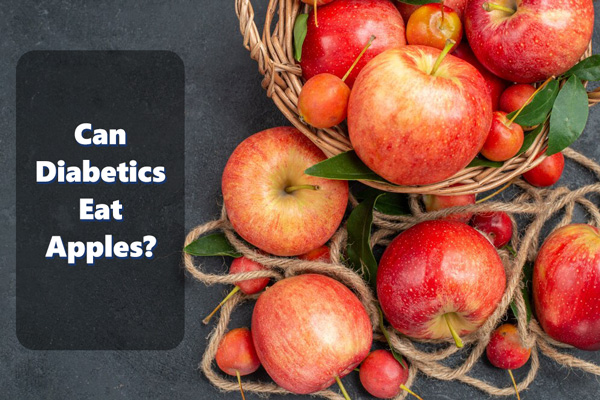The Best Foods for People with Diabetes
Diabetes is a chronic disease that affects millions of people worldwide. It occurs when the body is unable to produce or properly use insulin, resulting in high levels of glucose in the blood. Managing diabetes requires a combination of medication, exercise, and a healthy diet. In this article, we will discuss the best foods for people with diabetes, along with their benefits and how they can help manage the condition.
Contents
- 1 1. Whole Grains: A Staple for a Healthy Diabetic Diet
- 2 2. Fatty Fish: A Heart-Healthy Protein Source for People with Diabetes
- 3 3. Non-Starchy Vegetables: A Nutrient-Dense Option for People with Diabetes
- 4 4. Nuts and Seeds: A Healthy Snack Option for People with Diabetes
- 5 5. Low-Fat Dairy: A Calcium-Rich Option for People with Diabetes
- 6 FAQs
- 7 Conclusion
1. Whole Grains: A Staple for a Healthy Diabetic Diet
What are whole grains?
Whole grains are grains that contain all three parts of the grain: the bran, germ, and endosperm. This means that they are not refined and still contain all the essential nutrients, such as fiber, vitamins, and minerals.
Why are they good for people with diabetes?
Whole grains are an excellent source of complex carbohydrates, which are digested slowly and do not cause a spike in blood sugar levels. They also contain high levels of fiber, which helps regulate blood sugar levels and improve insulin sensitivity. Additionally, whole grains have been linked to a reduced risk of heart disease, a common complication of diabetes.

How to incorporate whole grains into your diet
- Replace white bread, rice, and pasta with whole grain alternatives.
- Choose whole grain breakfast cereals, such as oatmeal or bran flakes.
- Snack on whole grain crackers or popcorn instead of chips or cookies.
2. Fatty Fish: A Heart-Healthy Protein Source for People with Diabetes
What are fatty fish?
Fatty fish are types of fish that contain high levels of omega-3 fatty acids, such as salmon, tuna, mackerel, and sardines.
Why are they good for people with diabetes?
Fatty fish are an excellent source of protein and contain healthy fats that can help lower cholesterol levels and reduce the risk of heart disease. They also have anti-inflammatory properties, which can benefit people with diabetes who are at a higher risk of developing chronic inflammation.
How to incorporate fatty fish into your diet
- Aim to include fatty fish in your meals at least twice a week.
- Grill or bake fish instead of frying it to keep the fat content low.
- Add canned tuna or salmon to salads or sandwiches for a quick and easy meal.
3. Non-Starchy Vegetables: A Nutrient-Dense Option for People with Diabetes
What are non-starchy vegetables?
Non-starchy vegetables are vegetables that contain fewer carbohydrates and calories compared to starchy vegetables, such as potatoes and corn. Examples of non-starchy vegetables include leafy greens, broccoli, cauliflower, and bell peppers.
Why are they good for people with diabetes?
Non-starchy vegetables are rich in vitamins, minerals, and fiber, making them an essential part of a healthy diabetic diet. They also have a low glycemic index, meaning they do not cause a significant increase in blood sugar levels. Additionally, their high water content can help you feel full and satisfied without consuming excess calories.
How to incorporate non-starchy vegetables into your diet
- Fill half of your plate with non-starchy vegetables at each meal.
- Snack on raw vegetables with hummus or a low-fat dip.
- Add vegetables to soups, stir-fries, and omelets for a nutrient boost.
4. Nuts and Seeds: A Healthy Snack Option for People with Diabetes
What are nuts and seeds?
Nuts and seeds are plant-based foods that are packed with nutrients, including healthy fats, protein, and fiber. Examples of nuts and seeds include almonds, walnuts, chia seeds, and flaxseeds.
Why are they good for people with diabetes?
Nuts and seeds are a great snack option for people with diabetes as they are low in carbohydrates and have a low glycemic index. They also contain healthy fats that can help lower cholesterol levels and reduce the risk of heart disease. Additionally, their high fiber content can help regulate blood sugar levels and keep you feeling full for longer.
How to incorporate nuts and seeds into your diet
- Snack on a handful of nuts or seeds instead of chips or cookies.
- Add chopped nuts or seeds to salads, yogurt, or oatmeal for extra crunch and nutrition.
- Use nut butters as a spread on whole grain toast or as a dip for fruits and vegetables.
5. Low-Fat Dairy: A Calcium-Rich Option for People with Diabetes
What is low-fat dairy?
Low-fat dairy refers to dairy products that have had some or all of the fat removed, such as skim milk, low-fat yogurt, and reduced-fat cheese.
Why is it good for people with diabetes?
Low-fat dairy is an excellent source of calcium, which is essential for maintaining strong bones and teeth. People with diabetes have a higher risk of developing osteoporosis, so incorporating low-fat dairy into their diet can help prevent this condition. Additionally, low-fat dairy products are lower in calories and saturated fat compared to full-fat options, making them a healthier choice for people with diabetes.
How to incorporate low-fat dairy into your diet
- Choose low-fat or non-fat dairy products, such as milk, yogurt, and cheese.
- Use low-fat milk in your coffee or tea instead of cream.
- Make a smoothie with low-fat yogurt, fruits, and vegetables for a nutritious and filling snack.
FAQs
What is the best type of exercise for people with diabetes?
The best type of exercise for people with diabetes is any physical activity that gets your heart rate up and makes you break a sweat. This can include walking, jogging, cycling, swimming, or any other form of aerobic exercise. Strength training is also beneficial as it helps build muscle mass and improve insulin sensitivity.
Can people with diabetes eat fruit?
Yes, people with diabetes can eat fruit in moderation. Fruits contain natural sugars, but they also provide essential vitamins, minerals, and fiber. It is recommended to choose whole fruits instead of juices and limit intake to 1-2 servings per day.
Is it okay to have a cheat meal if you have diabetes?
It is generally not recommended to have a cheat meal if you have diabetes. Consistently following a healthy diet is crucial for managing blood sugar levels and preventing complications. However, if you do decide to have a cheat meal, make sure to monitor your blood sugar levels closely and adjust your medication accordingly.
Are artificial sweeteners safe for people with diabetes?
Artificial sweeteners are considered safe for people with diabetes when consumed in moderation. They do not affect blood sugar levels and can be used as a substitute for sugar in foods and beverages. However, it is important to read labels and choose products that use artificial sweeteners in moderation.
Can weight loss reverse diabetes?
Weight loss can help improve insulin sensitivity and manage blood sugar levels in people with type 2 diabetes. However, it is not a cure for the disease. It is essential to continue following a healthy diet and exercise regularly to maintain weight loss and manage diabetes effectively.
Conclusion
Managing diabetes requires a combination of medication, exercise, and a healthy diet. Incorporating whole grains, fatty fish, non-starchy vegetables, nuts and seeds, and low-fat dairy into your diet can provide numerous health benefits for people with diabetes. These foods are nutrient-dense, low in carbohydrates, and can help regulate blood sugar levels, reduce the risk of heart disease, and improve overall health. Remember to consult with your healthcare provider before making any significant changes to your diet.





